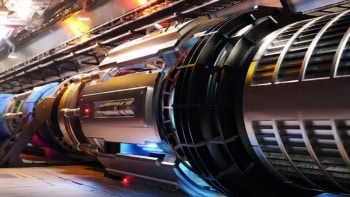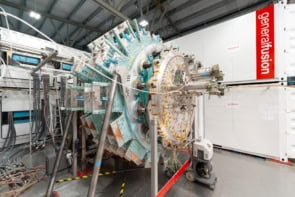Evidence is growing that four or more quarks can join together to form exotic particles or even subatomic molecules. Mike Williams of the Massachusetts Institute of Technology delves into the world of tetraquarks and pentaquarks to explain how these massive particles are studied using the Large Hadron Collider at CERN
Can subatomic particles contain four or more quarks and antiquarks? The Standard Model of particle physics says an emphatic “yes”, but for decades after quarks were first postulated in the 1960s, physicists could not find any particles containing more than three quarks. Over the past 15 years, however, physicists have spotted particles that appear to contain four and five quarks and antiquarks.
In this audio interview, Mike Williams of the Massachusetts Institute of Technology in the US explains how collider experiments such as LHCb at CERN have discovered tetraquarks (two quarks and two antiquarks) and pentaquarks (four quarks and an antiquark). Physicists know very little about the internal structure of these exotic particles and Williams explains how they could resemble molecules – a proton bound to a meson, for example – or simply be a tightly bound collection of quarks. He also explains why studying tetraquarks and pentaquarks could improve our knowledge of quantum chromodynamics – the theory of how quarks interact with each other – and speculates on whether particles containing even larger numbers of quarks could exist.



